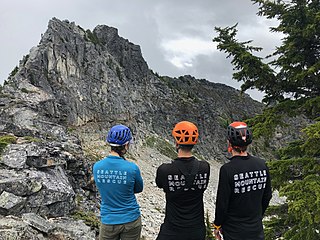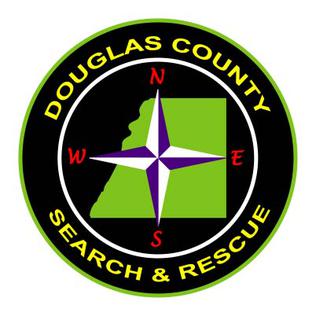
In the United States, community emergency response team (CERT) can refer to

The Federal Emergency Management Agency (FEMA) is an agency of the United States Department of Homeland Security (DHS), initially created under President Jimmy Carter by Presidential Reorganization Plan No. 3 of 1978 and implemented by two Executive Orders on April 1, 1979. The agency's primary purpose is to coordinate the response to a disaster that has occurred in the United States and that overwhelms the resources of local and state authorities. The governor of the state in which the disaster occurs must declare a state of emergency and formally request from the President that FEMA and the federal government respond to the disaster. The only exception to the state's gubernatorial declaration requirement occurs when an emergency or disaster takes place on federal property or to a federal asset—for example, the 1995 bombing of the Alfred P. Murrah Federal Building in Oklahoma City, Oklahoma, or the Space Shuttle Columbia in the 2003 return-flight disaster.

Search and rescue (SAR) is the search for and provision of aid to people who are in distress or imminent danger. The general field of search and rescue includes many specialty sub-fields, typically determined by the type of terrain the search is conducted over. These include mountain rescue; ground search and rescue, including the use of search and rescue dogs ; urban search and rescue in cities; combat search and rescue on the battlefield and air-sea rescue over water.

Mountain rescue refers to search and rescue activities that occur in a mountainous environment, although the term is sometimes also used to apply to search and rescue in other wilderness environments. This tends to include mountains with technical rope access issues, snow, avalanches, ice, crevasses, glaciers, alpine environments and high altitudes. The difficult and remote nature of the terrain in which mountain rescue often occurs has resulted in the development of a number of specific pieces of equipment and techniques. Helicopters are often used to quickly extract casualties, and search dogs may be deployed to find a casualty.

The nonprofit National Ski Patrol (NSP) is the largest winter education organization in the world. The NSP provides education, outreach, and credentialing related to outdoor recreation and safety. It is currently composed of more than 31,000 members who serve in over 650 patrols. NSP members, both volunteer and paid, ensure the safety of outdoor recreation enthusiasts in ski areas throughout the United States of America and certain military areas of Europe. For its dedication to the promotion of public safety in skiing and other winter sports, the group was granted a congressional charter under Title 36 of the United States Code in 1980.

Emergency management or disaster management is a science and a system charged with creating the framework within which communities reduce vulnerability to hazards and cope with disasters. Emergency management, despite its name, does not actually focus on the management of emergencies, which can be understood as minor events with limited impacts and are managed through the day-to-day functions of a community. Instead, emergency management focuses on the management of disasters, which are events that produce more impacts than a community can handle on its own. The management of disasters tends to require some combination of activity from individuals and households, organizations, local, and/or higher levels of government. Although many different terminologies exist globally, the activities of emergency management can be generally categorized into preparedness, response, mitigation, and recovery, although other terms such as disaster risk reduction and prevention are also common. The outcome of emergency management is to prevent disasters and where this is not possible, to reduce their harmful impacts.

The disaster recovery response to Hurricane Katrina in late 2005 included U.S. federal government agencies such as the Federal Emergency Management Agency (FEMA), the United States Coast Guard (USCG), state and local-level agencies, federal and National Guard soldiers, non-governmental organizations, charities, and private individuals. Tens of thousands of volunteers and troops responded or were deployed to the disaster; most in the affected area but also throughout the U.S. at shelters set up in at least 19 states.
The Arlington County Fire Department (ACFD) provides fire, emergency medical, and allied public safety services for Arlington County and the City of Falls Church in Virginia, USA. It is highly regarded within the profession as an innovator and leader in enhancing the industry. Among its many firsts are the hiring of the first female career firefighter in the world in 1974 and partnering with the United States Public Health Service to develop America's first Metropolitan Medical Strike Team to respond to the consequences of a chemical, biological or radiological terrorist attack.

The National Search and Rescue Program (NSP) is the name given by the Government of Canada to the collective search and rescue (SAR) activities in Canada. Until 2015, the NSP was administered by the National Search and Rescue Secretariat (NSS).

The United States National Grid (USNG) is a multi-purpose location system of grid references used in the United States. It provides a nationally consistent "language of location", optimized for local applications, in a compact, user friendly format. It is similar in design to the national grid reference systems used in other countries. The USNG was adopted as a national standard by the Federal Geographic Data Committee (FGDC) of the US Government in 2001.

A FEMA Urban Search and Rescue Task Force is a team of individuals specializing in urban search and rescue, disaster recovery, and emergency triage and medicine. The teams are deployed to emergency and disaster sites within six hours of notification. The Federal Emergency Management Agency (FEMA) created the Task Force concept to provide support for large scale disasters in the United States. FEMA provides financial, technical and training support for the Task Forces as well as creating and verifying the standards of Task Force personnel and equipment.

The United States’ Emergency Management Institute (EMI), of the United States Federal Emergency Management Agency (FEMA), serves as the United States’ focal point for the development and delivery of emergency management training. The emergency management training improves the capabilities of state, territorial, local, and tribal government officials; volunteer organizations; FEMA's disaster workforce; other Federal agencies; and the public and private sectors to minimize the impact of disasters and emergencies on the American public. EMI curricula are structured to meet the needs of this diverse audience, with an emphasis on separate organizations working together in all-hazards emergencies to save lives and protect property. Particular emphasis is placed on governing doctrine, such as, the National Response Framework (NRF), National Incident Management System (NIMS), and the National Preparedness Guidelines. EMI is fully accredited by the International Association for Continuing Education and Training (IACET) and the American Council on Education (ACE). The instruction is based upon the principles of Emergency Management and instructional systems design. This instruction creates a framework within whole community to reduce vulnerability to hazards and to cope with disasters. EMI develops courses and implements training delivery systems to include residential onsite training; offsite delivery in partnership with Emergency Management training systems, colleges, and universities; and technology-based mediums to conduct individual training courses for Emergency Management and Response personnel across the United States.
The National Fire Academy (NFA) is one of two schools in the United States operated by the Federal Emergency Management Agency (FEMA) at the National Emergency Training Center (NETC) in Emmitsburg, Maryland. Operated and governed by the United States Fire Administration (USFA) as part of the U.S. Department of Homeland Security (DHS), the NFA is the country’s preeminent federal fire training and education institution. The original purpose of the NFA as detailed in a 1973 report to Congress was to "function as the core of the Nation's efforts in fire service education—feeding out model programs, curricula, and information..."

Seattle Mountain Rescue (SMR) is an all volunteer non-profit mountain rescue team operating out of King County, Washington. SMR is part of the King County Search & Rescue Association (KCSARA) and is also part of the Mountain Rescue Association, frequently working with other King County SAR teams as well as neighboring mountain rescue teams, including Everett Mountain Rescue, Tacoma Mountain Rescue, and Olympic Mountain Rescue.

Marin County Search and Rescue is an all-volunteer organization in Marin County within Marin County Sheriff's Office. With approximately sixty active members, Marin County's Search and Rescue responds to searches for missing children and adults, evidence and other search requests in the county and on mutual aid calls anywhere in the state of California. Marin SAR is a mountain rescue Type I team with the motto of: "Anytime, Anywhere, Any Weather."
Portland Mountain Rescue is a search and rescue organization based in Portland, Oregon, United States. It specializes in high angle mountain rescue and mountain rescue in northwest Oregon and southwest Washington, as well as providing educational materials and information on mountain and backcountry safety. Secondary areas of operations include Central Oregon and western Washington. The organization is 100% volunteer and has about 65 field-deployable members.

Search and rescue in the United States involves a wide range of organizations that have search and rescue responsibilities.

Douglas County Search and Rescue is an all-volunteer organization in Douglas County within Douglas County Sheriff's Office. With approximately sixty active members year-round, Douglas County's Search and Rescue responds to searches for missing children and adults, evidence and other search requests in the county and on mutual aid calls anywhere in the state of Colorado. Douglas SAR is a mountain rescue Type I certified team able to handle the toughest terrain and remain out in the field without resupply for extended periods.
The California Region of the Mountain Rescue Association consists of 20 accredited teams throughout California and also includes one team from Nevada. The California Region is one of the eight regions within the Mountain Rescue Association which is a national volunteer organization in the United States dedicated to saving lives through rescue and mountain safety education.

Christopher Van Tilburg is an American physician and author specializing in emergency, wilderness, travel, environmental, occupational, and public health medicine. He is author of 11 books on outdoor recreation, wilderness medicine, and international travel, including two memoirs on mountain rescue Mountain Rescue Doctor: Wilderness Medicine in the Extremes of Nature and Search and Rescue: A Wilderness Doctor's Life-and-Death Tales of Risk and Reward.
















